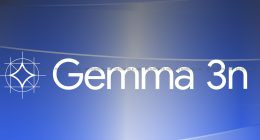What is predictive maintenance? This practice allows facilities and their corresponding technicians to identify and solve problems before a more serious situation arises, such as one that could damage expensive equipment or even threaten employee safety.
Predictive maintenance lowers the severity of any issues that crop up, and monitoring ahead of time ensures that employees can double-check and test every crucial part to continue functioning safely and within deadlines. In fact, predictive maintenance service providers like these can keep a small problem from turning into a weeks-long production bottleneck.
Maintenance costs and the potential failures that companies endure are reduced by applying predictive maintenance technologies. These monitoring tools have many notable advantages, such as decreasing maintenance costs by 50% and failures by 55%. Companies will also experience an uptime increase, thus increasing sales by a notable percentage.
Here are seven predictive maintenance technologies you can leverage to keep your plant on time and under budget.
Vibration analysis
Vibration analysis senses any noticeable vibrations from a specific element, i.e., displacement. As soon as any problematic signals are caught over time, then a necessary change must occur.
Vibration analysis collects current data to monitor possible issues and pinpoint what model units are not working correctly. Additionally, it informs workers of any incorrect installations that would affect the product, such as looseness or bearing failures.
Ultrasonic analysis
Ultrasonic analysis picks up high-frequency sounds and turns them into specific data; technicians and computer software can determine if there are any faulty aspects based on these frequencies and once the newly uploaded data is compared to the former. The results are immediate and use other equipped tools like cameras and analyzers to inspect further. The ultrasonic analysis also provides more information on any leaks in steam systems.
Infrared analysis
Infrared, while unable to be seen by humans, indicate a specific object’s temperature. If there is a drastic difference in temperature discovered in one or several views, the condition of the said object could be worsening. The operating parts and their corresponding insulation (often used in plumbing or solar panels) are essential for many modern businesses to function.
Since infrared is invisible, this approach ensures that the user is safe and could find various problems in concealed locations.
Motor circuit analysis
Motor circuit analysis deciphers any upcoming issues in motors and the pieces that construct them, such as belts and couplings. These tests use an electric signature analysis (ESA) to measure the voltage from the motor, their power, and their electrical circuitry.
The motor current can be analyzed while the equipment is operating or at other various levels.
Oil analysis
An oil analysis takes samples of oil and tests for its status (i.e., water content).
Most of the time, oil analysis has three main sections to look at:
- Lubricant health
- Machine health
- Contamination
If untreated, these can impact the equipment negatively, such as the parts wearing down.
This test is often used for critical equipment that runs at high speeds constantly. The oil is collected from the site itself before shipping to another facility for further inspection. If stable, the company lowers its oil consumption.
Thermal analysis
Heat is a clear indicator of if a machine is failing or malfunctioning. With thermal analysis, you can quickly obtain temperature from multiple areas that are analyzed easily. Like with infrared, there is no disruption to the machine or operations.
Thermal analysis is one of the first methods used to determine future problems.
Video analysis
With video analysis, images are produced and display the correlation between equipment over a specific amount of time. These measurements show any noticeable vibrations and can be difficult to mimic with a drawing, thus increasing accuracy.
Video analysis does not require an inspection of various system points and can be accomplished without the employees making contact.
Before you go
Applying these seven predictive maintenance technologies to your business will ensure that fewer problems and more productions will occur. As people say, an ounce of prevention is worth a pound of cure.



